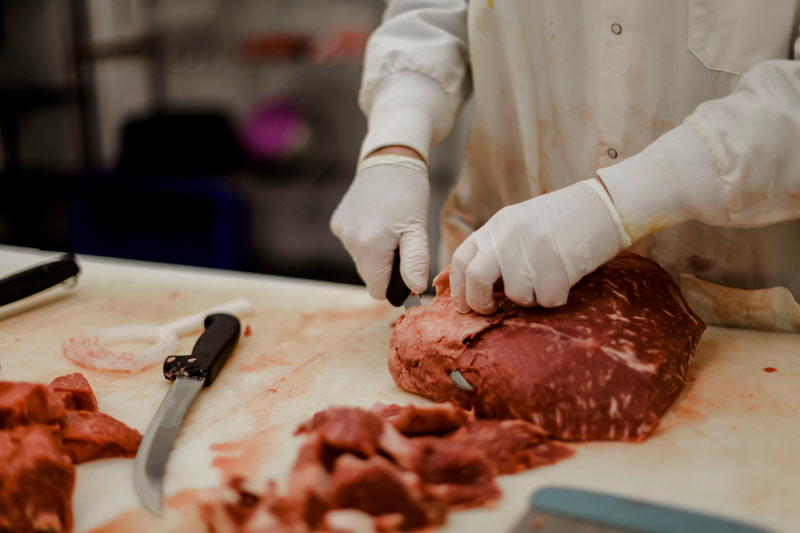Bagley Farms Meat Market Edwardsville IL: Your Trusted Resource for High-Quality Meats
Bagley Farms Meat Market Edwardsville IL: Your Trusted Resource for High-Quality Meats
Blog Article
Uncover the Art of the Butcher's Cut in a Modern Meat Market
In the ever-evolving landscape of contemporary meat markets, the butcher's cut has actually transcended its typical roots, merging age-old craftsmanship with contemporary techniques. What really establishes the modern-day butcher apart is their capacity to build a much deeper link in between consumers and the origins of their meat.
Development of Butchery Techniques
The advancement of butchery techniques reflects an abundant tapestry of innovation and adjustment driven by improvements in technology, modifications in customer need, and a much deeper understanding of meat science. Historically, butchery was a craft passed down through generations, with methods sharpened over centuries to take full advantage of yield and taste. Nonetheless, the industrial revolution introduced mechanization, transforming standard practices and making it possible for large-scale processing.
The mid-20th century saw butchery techniques better refined by scientific insights into muscle mass biology and meat aging, improving both inflammation and preference. Innovations like vacuum cleaner product packaging and refrigeration expanded item shelf-life, allowing butchers to diversify offerings and improve high quality control. This period also noted the increase of customized tools, such as band saws and meat slicers, which raised accuracy and efficiency in meat handling.

Computerized systems currently assist in monitoring pet provenance and enhancing cuts to meet specific client preferences. Additionally, a revival in artisanal butchery has actually arised, mixing traditional abilities with contemporary knowledge to provide to customers seeking ethical and lasting meat options.
Comprehending Meat Cuts
Recognizing the complexities of meat cuts is vital for both butchers and customers seeking top quality and worth. For butchers, precise cuts mirror ability and regard for the craft, making certain very little waste and ideal return.

Comprehending muscle structure is essential; muscles utilized more frequently by the animal often tend to be harder and are best matched for slow-moving food preparation approaches, while less-used muscles, like those located in the loin, are a lot more tender and suitable for barbecuing or roasting. Knowledge with these distinctions equips customers to make informed selections, enhancing their cooking undertakings.
Choosing High Quality Meat
Picking the appropriate meat involves even more than just selecting an aesthetically attractive piece from the screen. The art of picking top quality meat needs a critical eye and knowledge of particular qualities that symbolize freshness and quality.
Second of all, consider the marbling, which refers to the white flecks of fat within the muscular tissue. Proper marbling is a key indication of tenderness and taste, as it melts during food preparation, enhancing the meat's juiciness. Remember, higher marbling frequently correlates with premium top quality cuts, such as USDA Prime.
Texture is one more critical factor; meat should really feel solid a fantastic read to the touch, not slimed or extremely soft. Furthermore, be conscious of the aroma. Fresh meat needs to have a tidy, neutral odor, totally free from any sour or off-putting odors.
Coupling Cuts With Cooking Methods

Conversely, tougher cuts like brisket and chuck roast are rich in collagen, which breaks down into jelly when cooked slowly. These cuts are suitable for braising or sluggish roasting, allowing the meat to tenderize gradually and develop deep, complex tastes. Similarly, cuts such as brief ribs and pork shoulder prosper with slow-cooking approaches, where extended cooking times change their durable textures right into delicious recipes.
Lamb shanks and oxtail, which call for long term food preparation to tenderize, are excellent candidates for stewing or slow-moving simmering. These methods coax out abundant, passionate flavors while maintaining dampness. By recognizing the special features of each cut, chefs and home chefs alike can elevate their cooking developments, making certain each recipe is both pleasing and memorable.
The Butcher's Duty Today
Browsing the progressing landscape of the contemporary meat market, the butcher's function today prolongs past mere preparation of cuts. Contemporary butchers are cooking craftsmens, educators, and advocates for sustainable methods.
Along with crafting specific cuts, butchers now engage directly with customers, using cooking suggestions and customizing selections to fit individual demands and choices. Their experience in meat aging, marbling, and taste profiles equips customers to make educated special info choices, enhancing their cooking experiences. This personalized service exhibits the butcher's advancing function as a relied on advisor in the site link cooking area.
In addition, butchers are essential in reducing waste, making use of whole pets to create diverse items such as sausages and supplies. This thorough strategy not only values the pet but also lines up with contemporary sustainability objectives. In this means, the contemporary butcher embodies both practice and innovation, adapting to an ever-changing market while preserving the virtuosity and stability of their craft.
Conclusion
Mastery in understanding varied meat cuts and high quality indicators equips butchers to give educated recommendations, aligning details cuts with optimum cooking methods. By honoring historical practices while accepting modern needs, the butcher's duty remains important in today's sophisticated meat market.
Report this page